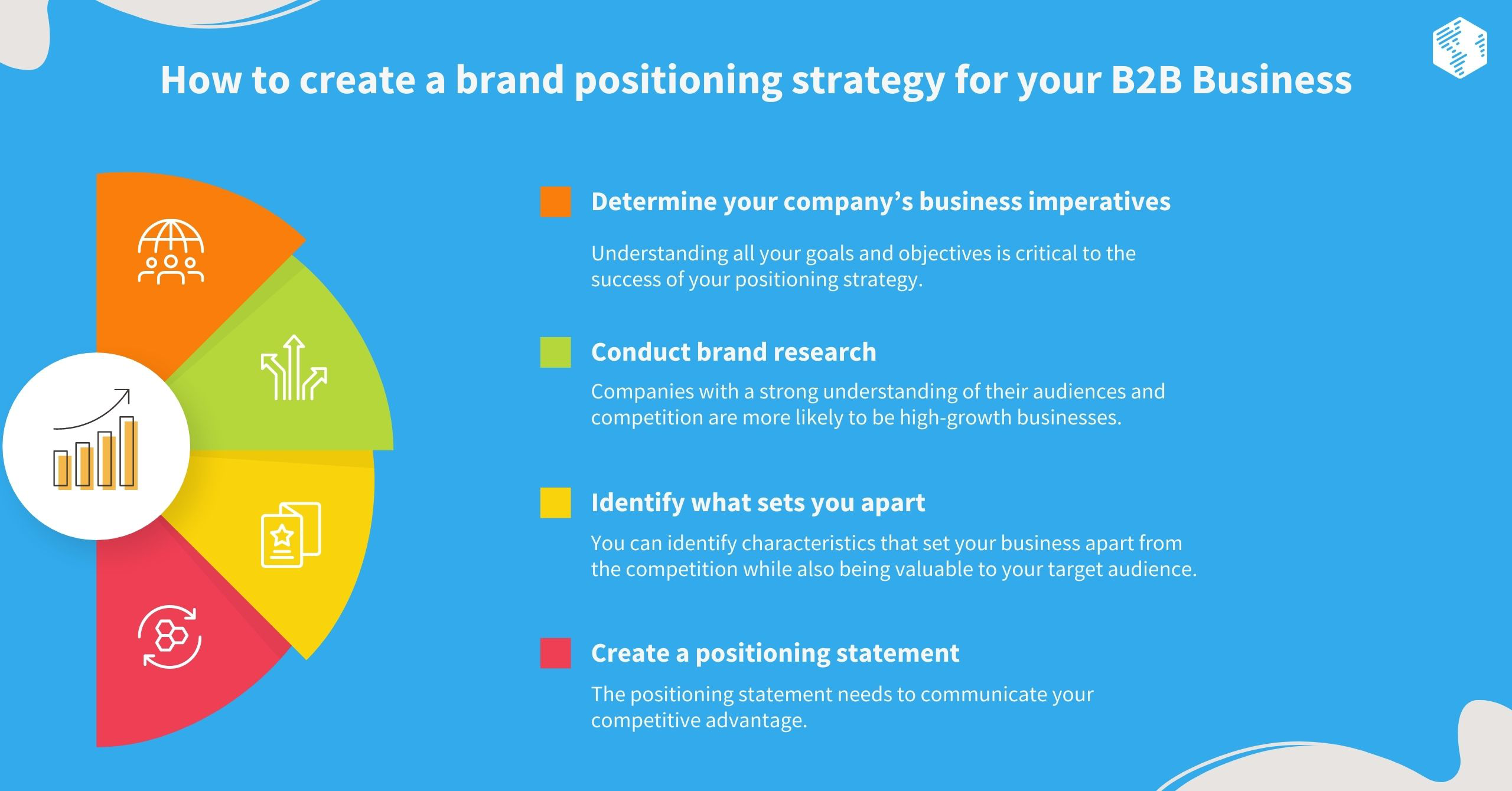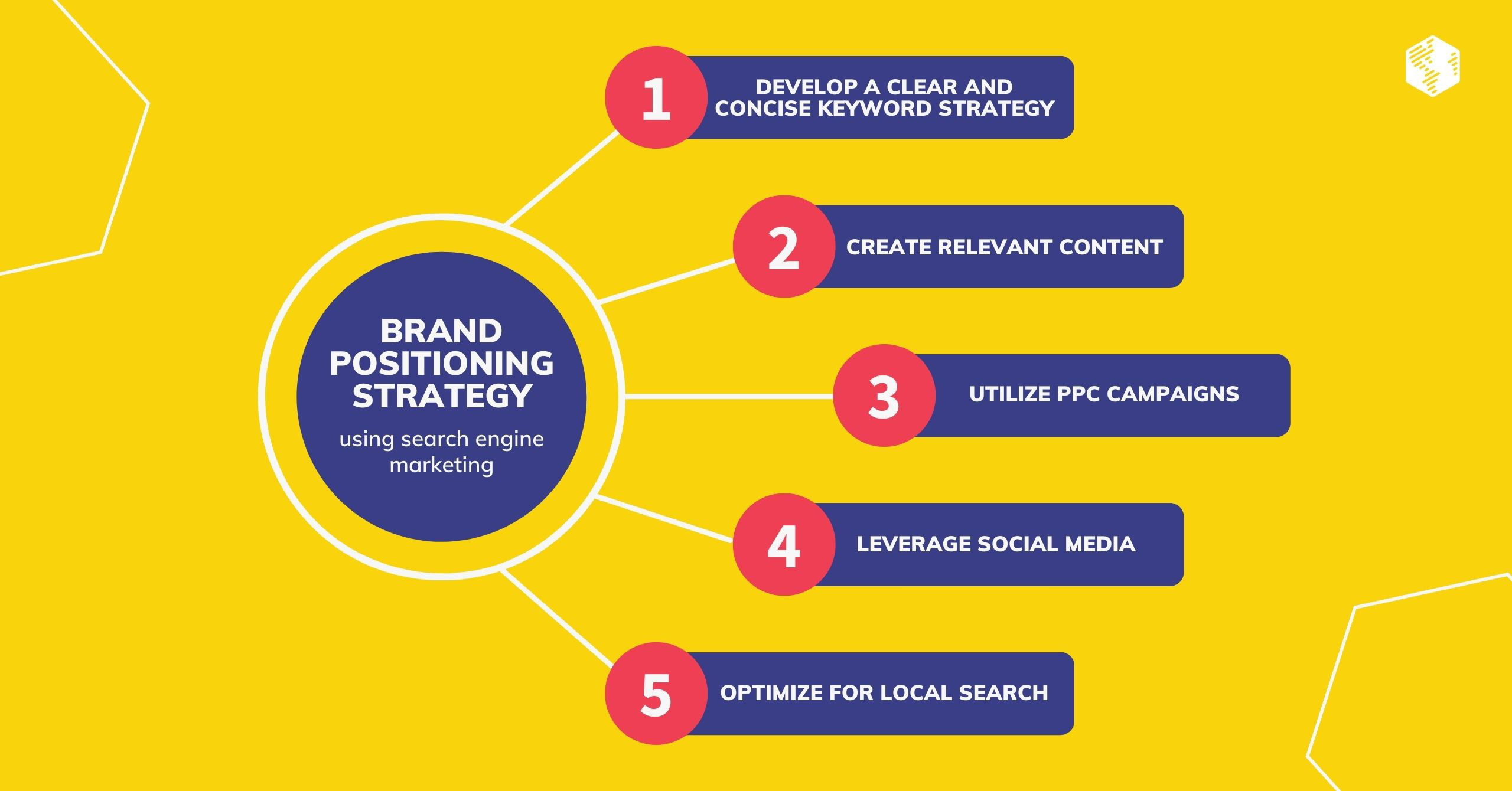Imagine the following scenario – everyone seems to be talking about brand positioning strategies, but you seem lost and out of sync.
Does it sound familiar?
Don’t worry if you’re not the biggest expert on brand positioning strategies – this is something you can easily understand. If you’ve been thinking about these unique strategies, contemplating what they are, and whether you need to implement them into your business, you’ve come to the right place.
In this article, we discuss everything related to brand position strategies. We have a lot to cover, so before we start, grab a cup of coffee or tea and get comfortable.
Now, let’s jump straight into it.
What is brand positioning?
Brand positioning is the process of positioning a brand in the minds of consumers by creating and promoting an image for the brand that is distinct from its competitors. The goal of brand positioning is to differentiate the brand from other brands in the same niche and make it the preferred choice of consumers.
Brand positioning involves creating:
- An identity for the brand;
- Marketing messages to communicate the identity;
- A strategy for delivering those messages to the target audience.
Therefore, it involves a combination of tactics such as messaging, pricing, and distribution to create an overall perception of the brand that is different from competitors. Brand positioning also involves understanding the market, the competition, and the customer to create a unique and attractive identity.
Every brand should have a unique positioning strategy that enables it to stand out from its competitors and reach specific business goals more efficiently.
READ: Eight Essential Components Every Brand Story Needs To Succeed
Importance of brand positioning for B2B businesses
Brand positioning is a critical factor for the success of B2B businesses. B2B businesses must understand their target customers and their needs, wants, and preferences to position their brand most effectively and appealingly. With that in mind, B2B businesses should focus on brand positioning for several reasons, including the ones mentioned below:
- Competition – brand positioning strategies help B2B businesses differentiate their offerings from their competitors and ensure they stay ahead of the competition and remain competitive in their market;
- Identity – B2B businesses can create a strong and recognizable brand identity quite easily with quality brand positioning strategies;
- Loyalty – building customer loyalty and creating a compelling value proposition that resonates with target customers isn’t easy, but that’s what brand positioning is all about;
- Focus – brand positioning helps B2B businesses stay focused on their core competencies and ensure that their offering is aligned with their strategic objectives.
With all that in mind, let’s move on to the different types of brand positioning strategies.
READ: Effective Video Content Strategy for B2B Brands: 5 Tips & Tricks for B2B Video Marketing
Types of brand positioning strategies
Brand positioning can take many different shapes and forms due to the several brand position strategies available to businesses. All brand positioning and differentiation strategies are unique, so a business needs to select the strategy that best fits its needs and expectations.
- Cost-driven positioning
To make use of cost-driven positioning, you need to offer everything your competitors do, only at a lower price point. Therefore, this is a difficult strategy to pursue unless you have an inherent cost advantage. Technology can be a powerful tool in this case, as it can help you reduce costs while still providing high-quality services.
- Quality of service positioning
While it’s true that buyers want quality and good customer service, these are usually just table stakes and are rarely the main criteria used to choose a company. Claiming that you offer the best quality or the most committed customer service is so common that it fails to impress buyers.
- Industry specialization
Specializing in a particular industry can be a popular and effective way to position a professional services company. That allows you to focus your marketing and evolve your services as the market changes, but it can also be risky if the industry experiences an economic downturn.
- Niche service specialization
This approach focuses on providing services that are not widely available from other businesses, offering specialized expertise that generalists might not possess. This strategy can be successful, but the danger is that demand for the service will increase, and new competitors may enter the market and dilute your offering.
- Role-focused specialization
Focusing on a particular function within an organization is an excellent way to differentiate yourself and demonstrate that you have the specialized knowledge and expertise to make your job easier.
How to create a brand positioning strategy for your B2B Business
If you want to create a successful brand positioning marketing strategy for your B2B business, all you have to do is follow the four steps described below. This simple step-by-step guide contains all the essential information you should remember when developing a brand positioning strategy.
- Determine your company’s business imperatives
Understanding all your goals and objectives is critical to the success of your positioning strategy. It will help you map out a path to achieving your desired growth and recruit the right talent to support your growth. Write down your business goals and ensure that everyone in the management team is on the same page.
- Conduct brand research
Companies with a strong understanding of their audiences and competition are more likely to be high-growth businesses. An independent entity often does this type of research to ensure confidentiality and encourage honest feedback from participants.
It may include interviews with current clients, prospects, referral sources, and an analysis of your competitors. The process will help you uncover the strengths and weaknesses of your company, as well as the factors that potential clients value when selecting a company.
- Identify what sets you apart
Here is where your business goals and brand research become valuable. Drawing on your team’s insights, external perceptions of your company, and a new understanding of your competitors’ positioning, you can identify characteristics that set your business apart from the competition while also being valuable to your target audience.
Your differentiators must be true, provable, and relevant to your target audience. You should be able to provide evidence to support each one, often found in the results of your brand research.
- Create a positioning statement
The positioning statement needs to communicate your competitive advantage. Your positioning statement should be a short paragraph that you can use internally to help you communicate your company’s unique selling points.
It’s a source you can return to for inspiration when describing your company or convincing people to buy from you. You can choose to create either a crafted paragraph or a prompted statement.
Brand positioning strategy using search engine marketing
In case search engine marketing is more up your alley, you might opt for a brand positioning strategy using search engine marketing. Here’s how to do it.
- Develop a clear and concise keyword strategy
Develop a list of keywords that accurately reflect your brand’s positioning and target audience. It will help focus your search engine marketing efforts and ensure that you are targeting the right people.
- Create relevant content
Create content relevant to your target audience and your main keywords. This content should be optimized for search engines and tailored to your target audience’s interests.
- Utilize PPC campaigns
Utilize pay-per-click (PPC) campaigns to increase visibility and drive more traffic to your website. You can use this strategy to target specific audiences and keywords.
- Leverage social media
Utilize social media platforms to build brand awareness and engage with your target audience. It can help you build relationships with potential customers and increase visibility.
- Optimize for local search
Your entire website and the content you offer must be optimized for local search if you want to reach customers in your geographic area. It will help you increase inbound leads and conversions.
B2B Brand positioning examples
Most businesses struggle with brand positioning. Even the most famous companies spend large amounts of money to create more profitable and competitive brand positioning strategies. Thanks to these brand positioning strategy examples, you can get a better understanding of what brand positioning is and how you should approach it.
- Apple
Apple prides itself on creating aesthetically pleasing and cutting-edge tech devices that stand out from the competition. Their message speaks to the same qualities in their customers, creating a sense of identity – if you use Apple products, you are imaginative, creative, and forward-thinking.
- Tesla
Tesla is no longer just an automaker but a high-performance energy company with a futuristic vision. Their marketing reflects this strategy, allowing them to appeal to customers with a premium experience at a premium price. The company’s mission statement is “accelerate the world’s transition to sustainable energy” while upholding values of environmental benefit, safety, and fun.
- Nike
Nike began with a commitment to performance and innovation, targeting professional athletes. Over the past few decades, their product line has grown to offer apparel and equipment that enhances performance. Their branding and messaging centers around empowerment, from the iconic “Just Do It” tagline to the Greek Goddess of Victory in their name.
- Starbucks
As the biggest coffee chain in the world, Starbucks offers convenience, quality, and an inviting atmosphere. They have a wide variety of coffee, tea, and other drinks and various food options. Their stores are also often decorated in a cozy and welcoming way.
- Ben & Jerry’s
Ben & Jerry’s is renowned for its delicious ice cream, creative flavor names, and fun packaging. The brand is also well-known for its commitment to social and environmental justice, using Fairtrade ingredients and advocating for causes such as climate change and racial justice.
Wrapping up
By going through the brand positioning strategies with examples and learning what brand positioning is, you’ll be prepared to tackle your B2B brand positioning strategy more effectively. If you want to dive deeper into this topic, be sure to read our previous blog.
OneIMS helps companies grow their business. Whether you’re interested in educating yourself through case studies or you’d like to receive a developed growth strategy, OneIMS has everything you need in one place.



































